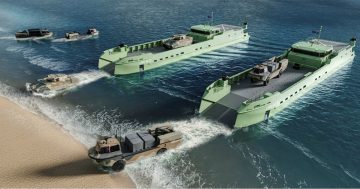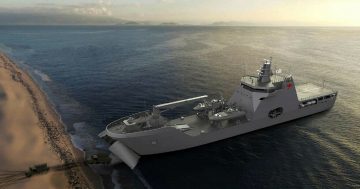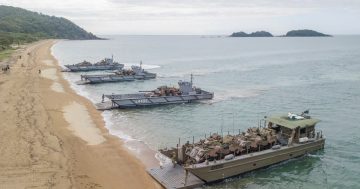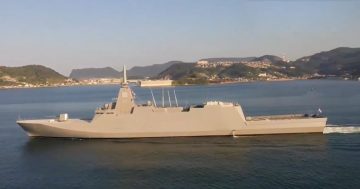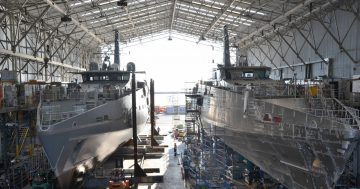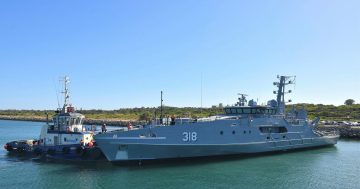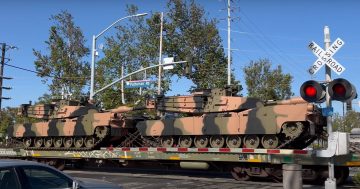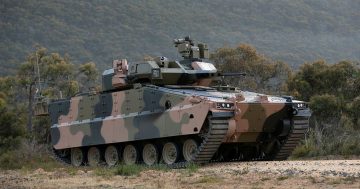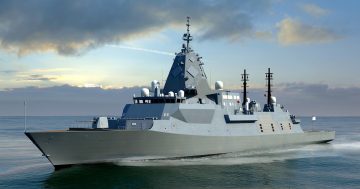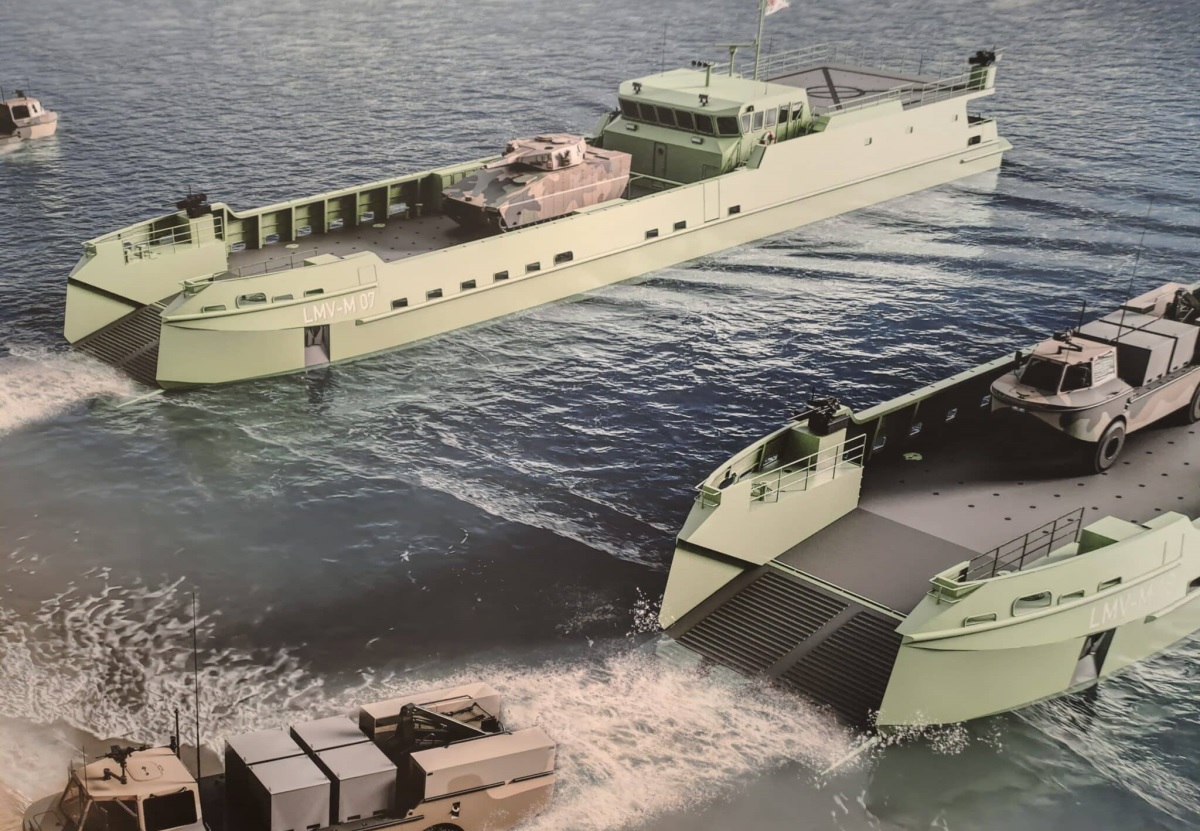
The winning Birdon/Incat Crowther LMV-M design was the largest of the four options offered for the LMV-M RFT. Image: Birdon/Incat Crowther.
The Federal Government has announced NSW-based Birdon Group has won the tender for the Australian Army’s Project LAND 8710 Phase 1A Littoral Manoeuvre Vessel – Medium (LMV-M) requirement.
Birdon’s Australian-designed LMV-M vessel was designed in conjunction with naval architects Incat Crowther. The vessels will not only replace the much-smaller LCM-8 landing craft in Army service, but will provide a much greater lift and range and endurance over their predecessors.
The Army operates 15 Vietnam-era LCM-8s – landing craft mechanised. These 22 metre long vessels feature a flat hull and the ability to drive up onto a beach, unload vehicles, equipment or troops, and then drive off again.
The Army took delivery of its LCM-8s between 1965 and 1972. Despite being upgraded with new engines, gearboxes and enhanced navigation systems in the mid-1990s, they are now considered well past their use-by date and are really only suitable for short-range littoral missions.
With a refocussing of the Australian Army to the northern defence of Australia, the ADF has two amphibious landing craft projects currently underway – the LMV-M, and LAND 8710 Phase 2A LMV-H (Heavy) which will follow with a replacement for the larger but long-retired Balikpapan class Landing Craft Heavy (LCH) vessels.
By comparison with the LCM-8, at nearly 49 metres, the Birdon LMV-M differs in its scale, but also because it will feature cabin accommodation and a galley for its crew and some passengers, integral weapons stations, and will be capable of self-deploying from their northern bases over much longer distances.
The requirement calls for a vessel that can self-deploy over 2000 km, and be able to operate in sea-state 4 and survive in up to sea-state 7 conditions, while retaining the ability to beach and un-beach itself to load and offload equipment.
The four LMV-M bidders included a team of Raytheon Australia, Austal and BMT; the Navantia-led Landing Craft Australia team; a team of Serco and Civmec; and the Birdon and Incat Crowther team. The requirement mandated that the landing craft should all be built at the Henderson shipyard near Fremantle in Western Australia.
To that end, the government has also announced its intention to maintain a continuous shipbuilding presence in Western Australia by investing in a strategic partnership between the Commonwealth and Henderson-based shipbuilder Austal Limited.
The government release described Austal as an asset of national importance and pivotal to the build and sustainment of vessels for the ADF, and says this significant reform will secure Henderson’s future as a vital naval shipbuilding complex.
As a part of the announcement, Austal has also been contracted to build an additional two Evolved Cape Class patrol boats to replace and significantly enhance the Navy’s at-sea navigation and seamanship training capability. It will also enter into negotiations for Austal to build Army’s 18 Birdon-designed LMV-M and follow-on LMV-H vessels.
Deputy Prime Minister and Defence Minister Richard Marles said the government was getting on with the job of delivering world class, sovereign capabilities to Defence.
“This significant reform will see Henderson become one of Australia’s biggest and most efficient naval shipbuilding complexes that has the capacity and capability to meet the evolving needs of our Defence Force,” he said.
“By securing the future of continuous naval shipbuilding at Henderson, industry will have the certainty it needs to invest in the local workforce and contribute to the West Australian economy for decades to come.”
Minister for Defence Industry Pat Conroy added: “This partnership represents a new approach to Australian shipbuilding and reflects the Albanese Government’s steadfast commitment to delivering a future made in Australia.
“A continuous pipeline of work and an efficient, streamlined approach will not only benefit the delivery of Defence capability but create industry confidence to invest in a highly capable shipbuilding workforce in Western Australia.
“Australian industry can compete with the best in the world, but for too long has suffered the boom bust cycle of shipbuilding, undermining productivity and workforce retention. This ends with this strategic partnership.”
Western Australian Minister for Defence Industry Paul Papalia said continuous naval shipbuilding in WA was something the state government had fought for since 2017.
“Western Australia is now recognised as being a key contributor to the nation’s defence strategy,” he said. “The… government will continue its efforts to diversify WA, grow the economy and build a more resilient, sustainable state.”


